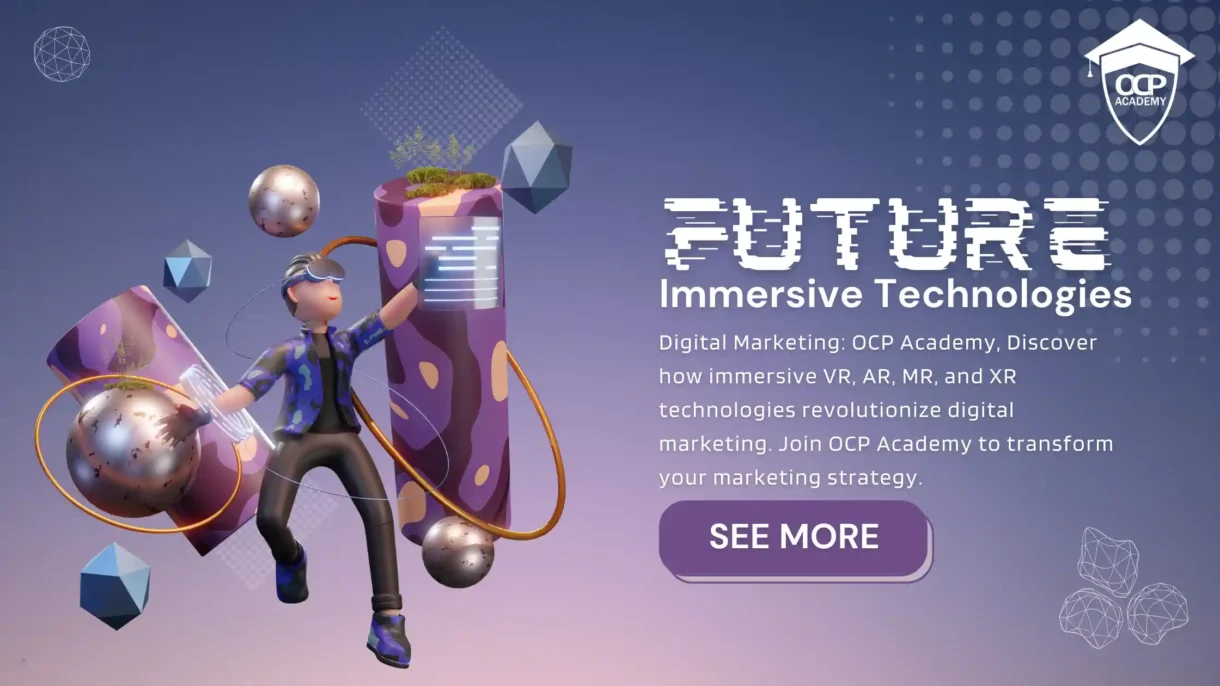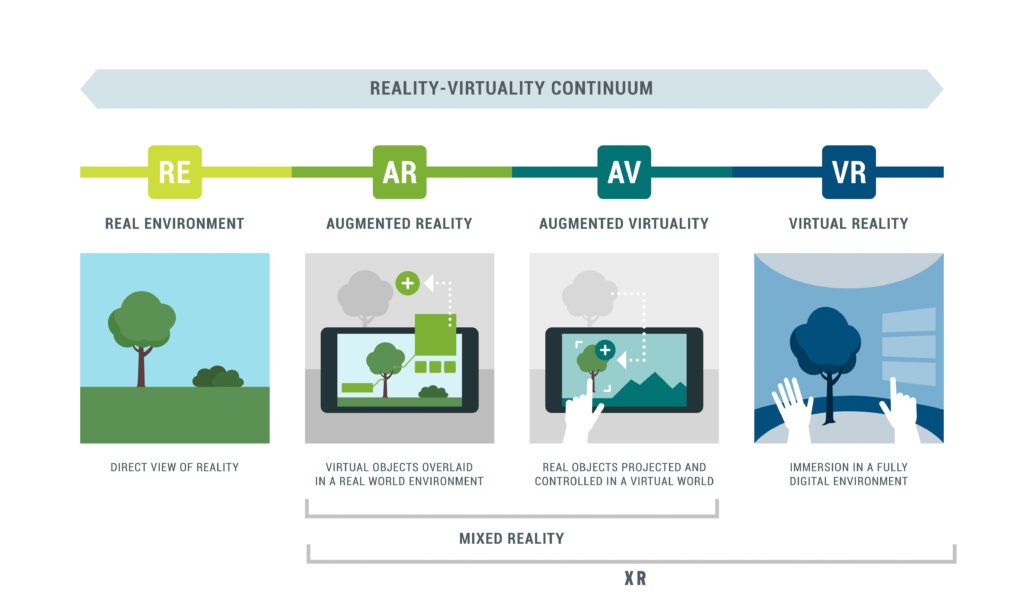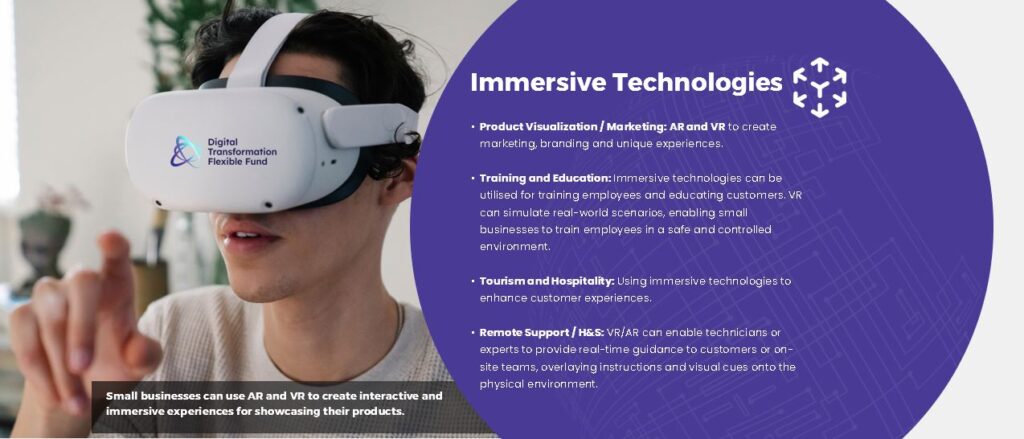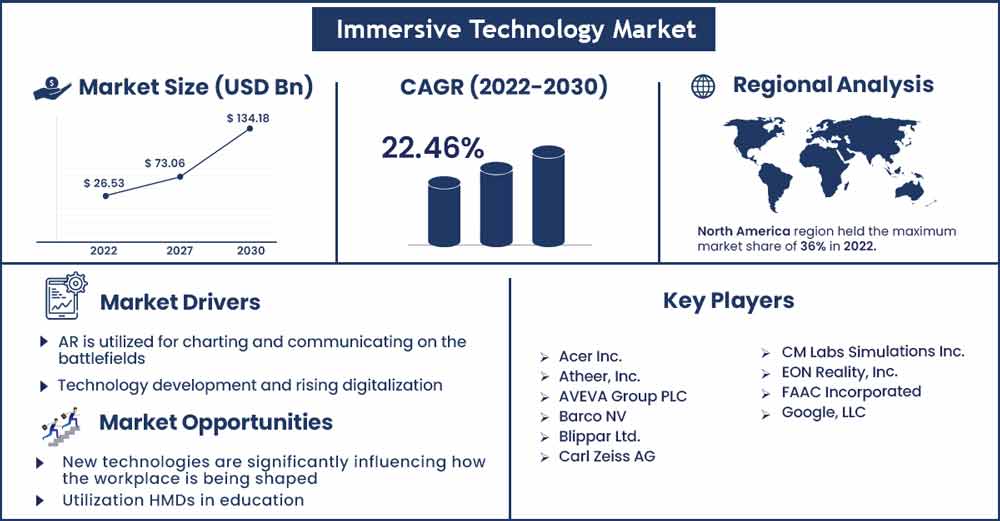
In today’s fast-paced digital world, immersive technologies are reshaping the landscape of marketing and consumer engagement. Have you ever wondered what it feels like to step into another world, where the boundaries between reality and imagination blur? This is exactly what immersive experiences offer. Through Virtual Reality (VR), Augmented Reality (AR), Mixed Reality (MR), and Extended Reality (XR), brands are now able to tell stories in ways that were once thought impossible. These technologies are not just buzzwords; they are transforming the way we interact with digital content and opening new avenues for digital marketing.
By weaving immersive technologies into digital campaigns, companies can engage their audiences on a personal and emotional level. Think of it like entering a theme park where every ride is tailored just for you—this is the magic of immersive marketing. At OCP Academy, we believe that embracing these innovations can take your marketing strategies to unprecedented heights. In this article, we will dive into the world of immersive technologies and explore how they are being integrated into digital marketing strategies, with a special focus on how OCP Academy is leading the way in this exciting field.
Below, you’ll find a detailed exploration of immersive technologies, broken down into clearly defined sections that will guide you through everything you need to know—from the basics of VR, AR, and MR to practical case studies and future trends. So, buckle up as we embark on this immersive journey together!
Table of Contents
Sr. Headings
1 Why Digital Marketing is the Most In-Demand Skill in 2025
2 How to Build a Career in Digital Marketing from Scratch
3 Best Digital Marketing Certifications to Advance Your Career
4 The Role of Analytics in Digital Marketing Success
5 How to Balance Learning Digital Marketing with a Full-Time Job
6 The Benefits of Learning Digital Marketing at OCP Academy
7 Conclusion: The Time to Learn Digital Marketing is NOW
1. What are Immersive Technologies?
Immersive technologies are revolutionizing how we experience digital content. They encompass VR, AR, MR, and XR—each offering a unique way to blend the digital and physical worlds. Imagine wearing a headset that transports you to a completely new environment, or holding up your smartphone to see digital layers over your real surroundings. These experiences are designed to captivate and engage, providing users with interactive and unforgettable moments.
At their core, immersive technologies break down the barriers between reality and digital experiences. They allow us to interact with content in a way that feels personal, much like a conversation with an old friend. With a focus on creating emotional connections, these technologies are set to change the way we perceive and interact with brands.
2. Understanding Virtual Reality (VR)
Virtual Reality is all about complete immersion. When you put on a VR headset, you are transported to an entirely different world—a world where you can interact with digital environments as if they were your own. This technology creates a sense of presence, making you feel as if you’re physically part of the experience.
Complete Immersion: VR eliminates the real world, letting you dive deep into a new universe.
Engaging Experiences: Whether it’s a virtual tour of a historical site or a simulated adventure, VR captivates audiences by engaging multiple senses.
Marketing Applications: For digital marketers, VR offers a playground of opportunities. Imagine hosting a virtual event where attendees can interact with products, or allowing customers to experience a service before making a purchase.
The emotional impact of VR can be compared to reading a captivating novel where every word paints a vivid picture in your mind. Don’t you want your audience to feel that same level of engagement?
3. Exploring Augmented Reality (AR)
Augmented Reality brings digital elements into the real world. Unlike VR, AR overlays graphics, sounds, or other data onto your view of reality, enhancing rather than replacing it.
Enhancing Reality: AR applications can superimpose product details onto a physical object, transforming a simple shopping experience into an interactive journey.
User Interaction: With AR, users can interact with virtual objects in real time, blending digital information with the real world seamlessly.
Marketing Magic: Imagine scanning a product with your smartphone and instantly accessing reviews, usage tips, and customization options. This is the power of AR in digital marketing.
AR is like adding a dash of spice to your favorite dish—it elevates the ordinary to the extraordinary. By integrating AR, brands can create memorable experiences that connect with audiences on a deeper level.
4. Diving into Mixed Reality (MR)
Mixed Reality merges the best of both worlds—bringing together real and virtual elements that can interact in real time. MR is not just an overlay; it’s an integration of digital content with the real environment.
Interactive Environments: MR creates spaces where digital objects behave as if they were part of the physical world, offering a blend of virtual and tangible experiences.
Practical Applications: In digital marketing, MR can be used to create interactive product demos, virtual showrooms, and even training sessions that simulate real-world scenarios.
Emotional Connection: The interactivity of MR fosters a sense of wonder and excitement, making consumers feel like they’re part of a futuristic narrative.
Think of MR as a symphony where digital and physical elements play in perfect harmony, creating an experience that resonates with the audience on a deeply personal level.
5. Extended Reality (XR) in a Nutshell
Extended Reality (XR) is an umbrella term that covers VR, AR, and MR. It represents the full spectrum of immersive experiences, offering flexibility and innovation in how we engage with digital content.
Comprehensive Approach: XR combines the strengths of VR, AR, and MR, providing diverse applications that cater to various needs and industries.
Marketing Revolution: For digital marketers, XR is a game-changer. It allows for versatile campaign strategies—from immersive product launches to interactive advertising that captivates and converts.
Future Possibilities: The possibilities with XR are endless. As technology evolves, so will the ways we integrate these experiences into everyday marketing efforts.
XR is like a master key that opens up multiple worlds of possibilities, ensuring that your digital marketing strategies remain ahead of the curve.
6. The Role of Immersive Tech in Digital Marketing
Immersive technologies have taken center stage in digital marketing strategies. But what makes them so compelling? The answer lies in their ability to create highly engaging, interactive experiences that forge emotional connections with audiences.
Enhanced Storytelling: With immersive tech, brands can tell stories in a multi-dimensional way that resonates emotionally. It’s not just about showing a product; it’s about creating an experience that feels real.
Improved Engagement: Interactive campaigns capture attention better than static images or text. When users are invited to participate in an experience, they are more likely to remember and share it.
Data-Driven Insights: Immersive technologies offer new avenues for tracking user interactions, providing valuable insights into consumer behavior and preferences.
Imagine your favorite story coming to life before your eyes, where you’re not just a passive listener but an active participant. That’s the power of immersive digital marketing.
7. How Immersive Technologies Enhance User Engagement
Engagement is at the heart of every successful marketing campaign. Immersive technologies elevate user engagement by offering experiences that are not only interactive but also deeply personal.
Personalized Experiences: With immersive tech, campaigns can be tailored to individual user preferences, creating unique journeys for each consumer.
Interactive Learning: Whether it’s exploring a virtual showroom or interacting with augmented product features, these technologies make learning about a product an adventure.
Emotional Resonance: When users are emotionally engaged, they are more likely to form a lasting connection with a brand. Immersive experiences evoke emotions through storytelling, visuals, and interactivity.
Consider immersive technology as a warm, inviting conversation with an old friend—one that leaves you feeling understood and excited about what’s next.
8. Case Studies: Immersive Technologies in Action
Let’s take a closer look at how immersive technologies have been successfully applied in digital marketing campaigns around the globe.
Virtual Product Launches: Brands like automotive giants and tech companies have used VR to host virtual product launches, enabling users from anywhere in the world to experience new releases as if they were on-site.
AR-Enhanced Retail: Major retailers have implemented AR apps that allow customers to visualize how products will look in their homes before making a purchase. This not only increases confidence but also reduces return rates.
MR in Training and Demonstrations: Companies have leveraged MR to create interactive training modules and product demonstrations, offering a hands-on experience without the risks or costs associated with physical trials.
Each case study reinforces the notion that immersive tech isn’t just a futuristic idea—it’s a practical solution that drives engagement, boosts sales, and enhances brand loyalty.
9. Implementing Immersive Technologies in Campaigns
Integrating immersive technologies into your digital marketing campaigns might sound daunting, but it can be both exciting and highly rewarding. Here are some key steps to get started:
Define Your Goals: What do you want to achieve? Increased engagement, better brand awareness, or higher conversion rates? Clear objectives will guide your strategy.
Choose the Right Technology: Decide whether VR, AR, MR, or a combination (XR) best fits your campaign’s needs. Consider your target audience and the message you want to convey.
Plan the User Journey: Map out how users will interact with your immersive experience. Ensure that each touchpoint is intuitive and engaging.
Invest in Quality Content: The success of immersive marketing lies in the quality of the experience. Work with skilled developers and creative teams to produce visually stunning and emotionally compelling content.
Measure and Optimize: Use analytics to track user engagement and campaign performance. Don’t be afraid to adjust your strategy based on real-time feedback.
By taking a thoughtful and strategic approach, you can harness the full potential of immersive technologies to create campaigns that truly resonate with your audience.
10. Future Trends of Immersive Marketing
The future of digital marketing is immersive, and trends suggest even greater innovations on the horizon. What can we expect in the coming years?
Increased Integration of AI: Artificial intelligence will further personalize immersive experiences, adapting in real time to user behavior and preferences.
Enhanced Mobile Experiences: As mobile devices become more powerful, immersive technologies will become increasingly accessible, allowing for on-the-go interactive marketing experiences.
Social Immersion: Social media platforms are beginning to integrate VR and AR features, turning traditional feeds into immersive, interactive experiences.
Cross-Platform Campaigns: Marketers will combine multiple immersive technologies to create cohesive, multi-channel campaigns that engage users across various touchpoints.
Sustainable Innovation: As immersive tech matures, expect more sustainable and cost-effective solutions that lower barriers to entry for businesses of all sizes.
Imagine a world where every advertisement is an immersive experience, a world where your brand story is not just told but lived. The future is closer than you think, and it’s poised to transform digital marketing forever.
11. Challenges and Solutions in Immersive Marketing
While the potential of immersive technologies is vast, marketers may face several challenges along the way. However, every challenge comes with a solution.
High Development Costs: Creating immersive experiences can be expensive. Solution: Start small and scale gradually. Pilot projects can help demonstrate ROI before larger investments are made.
Technical Complexity: Implementing VR, AR, or MR may require specialized skills and equipment. Solution: Partner with experts or consider training programs—OCP Academy offers courses designed to bridge these skill gaps.
User Adoption: Some users may be hesitant to adopt new technologies. Solution: Create intuitive experiences and provide clear instructions to ease the learning curve.
Content Quality: Poorly executed immersive content can backfire. Solution: Invest in quality production and user testing to ensure your campaigns are engaging and seamless.
Data Privacy Concerns: Collecting user data in immersive environments raises important questions about privacy. Solution: Be transparent about data usage and follow best practices in digital security.
By acknowledging these challenges and implementing smart solutions, marketers can overcome obstacles and unlock the true potential of immersive digital marketing.
12. Why Choose OCP Academy for Immersive Marketing Mastery?
When it comes to mastering the art of immersive digital marketing, OCP Academy stands out as a leader. But why choose us?
Expert-Led Training: Our courses are designed and taught by industry experts who have real-world experience in VR, AR, MR, and XR.
Hands-On Learning: We offer practical, project-based learning that allows you to apply what you’ve learned in real-time, ensuring that theory meets practice.
Cutting-Edge Curriculum: Our curriculum is constantly updated to reflect the latest trends and technologies, keeping you ahead of the curve in a rapidly evolving digital landscape.
Community and Support: When you join OCP Academy, you become part of a vibrant community of like-minded professionals who are passionate about digital marketing and innovation.
Career Advancement: Whether you’re looking to enhance your current skills or pivot into a new career, our immersive marketing programs provide the tools and knowledge you need to succeed.
At OCP Academy, we believe that the future of marketing is immersive, and we’re here to help you take that leap into a world of endless possibilities.
13. Building a Career in Immersive Technologies
Are you excited by the prospects of immersive technologies? Building a career in this field can be as thrilling as stepping into a virtual wonderland. Here’s how you can prepare:
Education and Certification: Invest in learning through accredited programs and certifications that focus on immersive tech. This foundation will equip you with the skills needed to thrive.
Hands-On Projects: Practical experience is crucial. Participate in workshops, hackathons, or collaborative projects that allow you to experiment with VR, AR, and MR.
Networking: Connect with industry professionals through online forums, social media groups, and industry events. Networking opens doors to opportunities and insights.
Stay Informed: The tech landscape evolves rapidly. Follow industry news, subscribe to newsletters, and participate in continuous learning to keep your skills relevant.
Portfolio Development: Showcase your projects and achievements in a well-curated portfolio. Employers and clients want to see tangible evidence of your expertise.
Embrace the journey with passion and determination—the world of immersive technologies is waiting for creative minds like yours.
14. How to Get Started with OCP Academy
Taking the first step into immersive marketing can feel like stepping into an entirely new universe. At OCP Academy, we make this transition smooth and inspiring. Here’s what you can do to get started:
Explore Our Courses: Visit our website to discover a range of courses tailored to various skill levels—from beginner to advanced immersive marketing strategies.
Sign Up for a Free Webinar: Gain a taste of what immersive learning is all about with our free introductory webinars, where you can learn directly from industry leaders.
Connect with Our Advisors: Our friendly advisors are ready to answer your questions and help you choose the right path for your career and business goals.
Join Our Community: Become part of a supportive network of peers and mentors who share your passion for immersive digital marketing.
Start Your Project: Put your newfound knowledge into practice with hands-on projects that challenge and excite you, setting you on the path to mastering immersive technologies.
At OCP Academy, we believe that every journey begins with a single step—and we’re here to guide you every step of the way.
Immersive technologies are more than just futuristic concepts; they are the present and future of digital marketing. By harnessing the power of VR, AR, MR, and XR, brands can create compelling experiences that deeply resonate with audiences, driving engagement and forging emotional connections. As we’ve explored in this article, the transformative potential of immersive tech is immense—from enhancing storytelling and user engagement to shaping the future of marketing trends. For anyone looking to make a mark in digital marketing, embracing immersive technologies is not just an option—it’s a necessity. With expert guidance from OCP Academy, you can unlock innovative strategies that transform your marketing campaigns into immersive journeys that captivate and inspire. The road ahead is exciting, filled with endless opportunities to innovate and lead. Are you ready to step into a world where digital marketing transcends boundaries and creates truly unforgettable experiences?


Immersive technologies include VR, AR, MR, and XR. VR offers complete digital environments, AR overlays digital content on the real world, MR blends real and virtual elements interactively, and XR is an umbrella term for all these experiences.
They create interactive and personalized experiences that capture attention, build emotional connections, and drive user engagement through innovative storytelling and hands-on interactions.
Common challenges include high development costs, technical complexity, user adoption barriers, and ensuring high-quality content. These can be overcome with careful planning, expert collaboration, and scalable pilot projects.
OCP Academy offers expert-led courses, hands-on projects, cutting-edge curriculum, and a supportive community, ensuring you gain practical skills and up-to-date knowledge in immersive marketing.
Begin by acquiring relevant certifications, engaging in hands-on projects, networking with industry professionals, and building a strong portfolio. OCP Academy provides resources and guidance to kickstart your journey in this dynamic field.





